Utilization of X-Rays in Ophthalmology: An Overview


Intro
The utilization of X-rays in ophthalmology signifies a pivotal transformation within medical diagnostics. This section aims to explore the principles behind this technology and its increasing relevance in eye care. The integration of X-ray imaging into ophthalmology has not only enhanced diagnostic precision but also provided a valuable tool for understanding complex ocular conditions.
Overview of Research Topic
Brief Background and Context
X-rays have been a cornerstone of medical imaging since their discovery in 1895 by Wilhelm Conrad Röntgen. Traditionally associated with the diagnosis of skeletal and organ conditions, this technology has found applications beyond these common uses. Within the realm of ophthalmology, X-ray imaging helps in examining various eye disorders, including ocular tumors, infections, and more complex disorders linked to the optic nerve.
As medical technology evolves, the interest in refining imaging modalities for eye specialists has increased. This growing focus reflects the broader trends in healthcare towards enhanced diagnostic tools, which aim to improve patient outcomes through early and accurate detections.
Importance in Current Scientific Landscape
Today, X-ray technology continues to be refined. With advancements in digital imaging and processing techniques, the clarity and efficiency of X-rays have improved substantially. This technological evolution leads to better imaging quality, enabling healthcare professionals to perform more accurate diagnoses.
The importance of X-rays in current ophthalmology cannot be overstated. Their application has opened new avenues for research and development, aligning with contemporary healthcare objectives that prioritize minimizing invasiveness while maximizing diagnostic capability.
Methodology
Research Design and Approach
A qualitative approach provides the framework for understanding the utilization of X-rays in ophthalmology. Reviewing case studies, clinical findings, and existing literature highlights the diverse applications in a clinical setting. This enables a structured exploration of how X-ray imaging techniques can assist in diagnosing specific ocular conditions.
Data Collection Techniques
- Literature Review: Analyzing current scholarly articles on the applications of X-rays in eye care.
- Case Studies: Examining specific instances from medical practice where X-ray technology aided diagnosis.
- Interviews with Experts: Gathering insights from ophthalmologists on their experiences and the evolving role of X-ray imaging in their practice.
The thoughtful integration of X-ray techniques into routine ophthalmic evaluations may lead to breakthroughs that enhance patient care and improve outcomes.
In summary, this detailed look into X-ray utilization within ophthalmology sets the stage for further discussions on its specific applications and limitations. The insights gained here will be crucial for professionals in the medical field as they seek to leverage technological advancements in enhancing ocular health.
Prelims to X-Rays
X-rays play a significant role in modern medicine, benefiting various specialties, including ophthalmology. Their application in this area offers unique advantages, particularly in diagnosing and evaluating eye conditions. Understanding X-rays is crucial as they allow clinicians to visualize structures and abnormalities within the eye that may not be apparent through traditional examination methods.
Definition of X-Rays
X-rays are a form of electromagnetic radiation, similar to visible light but with much shorter wavelengths. This property enables them to penetrate different materials, including human tissue. When directed toward an object, X-rays can produce images based on the varying densities of the structures within the object. In the context of ophthalmology, this means providing crucial insights into the anatomy and health of the eye.
History of X-Ray Technology
The foundation of X-ray technology dates back to 1895, when Wilhelm Conrad Röntgen discovered X-rays accidentally while experimenting with cathode rays. Röntgen's initial work won him the first Nobel Prize in Physics in 1901, marking the beginning of medical imaging.
In the early years, X-ray usage was limited by equipment and safety concerns. However, technological advancements have led to more sophisticated machines, such as digital X-ray systems that improve image quality and reduce radiation exposure to patients. This evolution continues to affect how ophthalmologists utilize X-rays, enhancing their ability to diagnose and treat eye diseases effectively.
Principles of X-Ray Imaging
Understanding the principles of X-ray imaging is essential in the context of ophthalmology. This section elucidates how X-rays function and describes the equipment employed in capturing images of eye structures. Grasping these foundational concepts is crucial for healthcare professionals involved in diagnosis and treatment formulations.
How X-Rays Work
X-rays are a form of electromagnetic radiation. They possess enough energy to pass through various substances, including soft tissues like those found in the human body. When directed at an object, the X-rays interact differently depending on the density of the materials encountered. Dense structures, such as bones, absorb more X-rays and appear white on the resulting image. In contrast, softer tissues allow more X-rays to pass through, resulting in darker areas on the film or digital sensor.
In ophthalmology, this technology allows practitioners to visualize the anatomy of the eye and surrounding structures. A radiographic technique typically involves the patient being positioned between an X-ray source and a detector. As the X-ray beam is emitted, the detector captures an image which reflects the variations in X-ray absorption caused by different tissues.
A critical aspect to remember is that the image produced is a two-dimensional representation of a three-dimensional structure. Thus, while X-ray imaging is highly effective, it may sometimes require supplementary imaging techniques for comprehensive evaluations.
"X-ray imaging is a fundamental tool in modern medicine, reshaping our understanding of internal disorders, especially in specialized fields like ophthalmology."
Types of X-Ray Equipment
The effectiveness of X-ray imaging relies heavily on the type of equipment used. Various devices cater to specific diagnostic needs, and understanding these distinctions enhances the imaging process.
Some of the common types of X-ray equipment used in ophthalmology include:
- Standard X-ray machines: These machines create X-ray images by emitting beams through the eye region and capturing the transmitted image on a detector.
- Digital X-ray systems: Digital technology has transformed the imaging process, offering quick results and high-resolution images. This innovation allows flexibility in adjusting contrast and brightness during analysis.
- Computed Tomography (CT) scanners: Although more commonly associated with complex imaging of internal organs, CT can also be utilized for detailed imaging of the orbits and adjacent structures of the eye.
- Fluoroscopy units: These provide real-time X-ray imaging and can be used for dynamic assessments of eye movements and other dynamic processes.
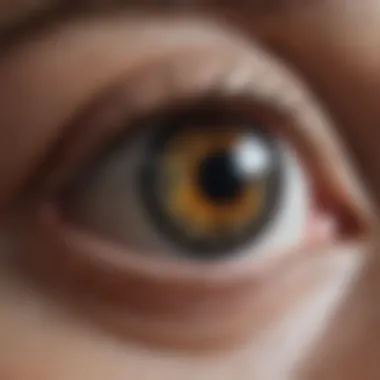
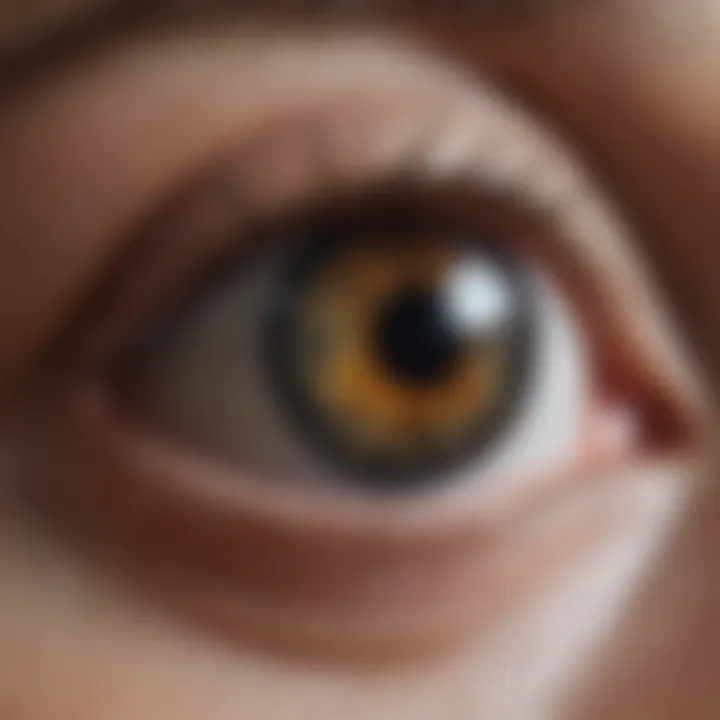
Each type of equipment has its advantages and limitations. The choice depends on the clinical situation, desired outcome, and the specific ocular condition being evaluated. Medical professionals must stay informed on the latest technological advancements to ensure optimal patient care.
Applications of X-Rays in Ophthalmology
X-rays have made substantial contributions to the field of ophthalmology, offering insights that are difficult to obtain through other imaging modalities. Their ability to penetrate different tissues allows for the visualization of various ocular structures, aiding in both diagnosis and treatment planning. As the understanding of ocular health evolves, utilizing X-rays can enhance diagnostic accuracy and improve patient management.
Diagnosing Eye Conditions
Orbital fractures
Orbital fractures often result from trauma and can impact both the aesthetic appearance and functionality of the eye. X-rays are a common tool for the initial assessment of these injuries. Their key characteristic is the ability to reveal the structural integrity of the bony orbit, helping to identify fractures that may not be visible externally. This allows for timely intervention, which is crucial in preventing complications such as vision loss.
However, while X-rays are beneficial for evaluating the orbit, they do have limitations. For example, X-ray imaging may not provide detailed information about soft tissue injuries, which could be a significant aspect of some traumas. Thus, combining X-rays with other imaging methods like CT scans may yield more comprehensive results.
Tumors in the eye region
When evaluating tumors, particularly those in or near the eye region, X-rays serve an important role in initial assessments. They can help identify masses that may indicate the presence of tumors. The distinct characteristic of X-rays is their capacity to visualize calcifications or certain densities in tumor formations, which can provide vital clues regarding the tumor's nature. This helps in deciding the subsequent steps for management.
Nevertheless, X-rays may lack the sensitivity to detect small or early-stage tumors effectively. More sophisticated imaging techniques, such as MRI or ultrasound, may be needed for comprehensive assessments.
Retinal diseases
X-rays can also be applied to the diagnosis of various retinal diseases. They assist in viewing the overall structure of the eye, providing indirect evidence of retinal issues. X-rays highlight significant factors like bone densities that may influence eye health. Their non-invasive nature allows clinicians to make initial evaluations conveniently.
However, X-rays are not the most reliable method for detailed visualization of the retina itself. Many retinal diseases require further investigation using methods like fundus photography or OCT for clear and precise imaging of the inner layers of the eye.
Evaluating Eye Structures
Sclera imaging
Sclera imaging through X-rays allows for examining the outer protective layer of the eye. This method can reveal issues such as scleral swelling or calcification. A critical utility is its ability to visualize the sclera in conjunction with other structures of the eye. This aids in forming a comprehensive assessment of ocular health.
The advantage of scleral imaging with X-rays is its simplicity and speed. However, like other forms of X-ray imaging, it might not provide a complete picture. More advanced modalities are often required for a thorough evaluation of the sclera and its surrounding structures.
Cornea evaluation
Corneal evaluation using X-rays provides insights into conditions such as corneal opacities or irregularities. The clear dome of the cornea can be assessed to a degree using X-ray technology, particularly in relation to the overall ocular structure. It is beneficial in identifying corneal conditions that may need surgical interventions.
Yet, the resolution of corneal details through X-rays is limited. Often, more specialized imaging techniques, like corneal topography, are required to obtain detailed maps and profiles of corneal surface abnormalities.
Lens examination
Lens examination using X-rays can assist in identifying cataracts or lens dislocation. The unique aspect of lens imaging with X-rays is its ability to show opacity levels in the lens, providing useful information for diagnosis. This can help practitioners evaluate the need for surgical correction.
Nevertheless, the disadvantages include the inability to analyze the internal structures of the lens in detail. Techniques like slit-lamp examination or ultrasound biomicroscopy may provide more comprehensive data regarding lens conditions.
X-ray technology is a valuable tool in diagnosing and evaluating various eye conditions. Integrating it effectively with other imaging modalities can offer a more complete understanding of ocular health.
Benefits of X-Ray Imaging for Eyes
The benefits of X-ray imaging in ophthalmology are significant. They provide crucial insights into ocular health, enabling precise diagnosis and treatment planning. Understanding these aspects is essential for both healthcare professionals and patients to appreciate the role of X-rays in modern eye care.
High-Resolution Imaging
High-resolution imaging is one of the primary benefits of using X-rays in ophthalmology. This technology allows practitioners to obtain detailed images of the eye and surrounding structures. Through advancements in X-ray equipment, imaging quality has improved, leading to more accurate assessments of various conditions.
For instance, X-rays can delineate the anatomy of the orbit with remarkable clarity. This helps in identifying fractures, tumors, and other abnormalities that could affect vision or ocular health. The fineness of the images leads to better diagnosis as eye care providers can observe subtle changes that might go unnoticed with less detailed imaging methods.
Non-Invasive Procedure
Another important benefit is that X-ray imaging is generally a non-invasive procedure. Patients can undergo X-rays with minimal discomfort, which is an appealing aspect in eye examinations. Unlike some other imaging modalities that might require inserting instruments into the eye or using high-pressure techniques, X-ray imaging typically involves positioning the patient in front of the machine and having them gaze at a target.
This ease of use improves patient compliance, especially among those who suffer from anxiety regarding medical procedures or have conditions that make cooperation more difficult. Moreover, being non-invasive means there is a lower risk of complications associated with the imaging process.
"Non-invasive procedures like X-ray imaging reduce the stress on patients, leading to better overall experiences during eye examinations."
In summary, the benefits of X-ray imaging, including high-resolution outputs and non-invasive techniques, greatly enhance the ability of ophthalmologists to diagnose and manage eye health efficiently.
Limitations of X-Ray Use in Ophthalmology
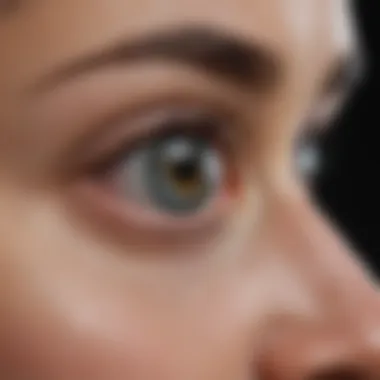
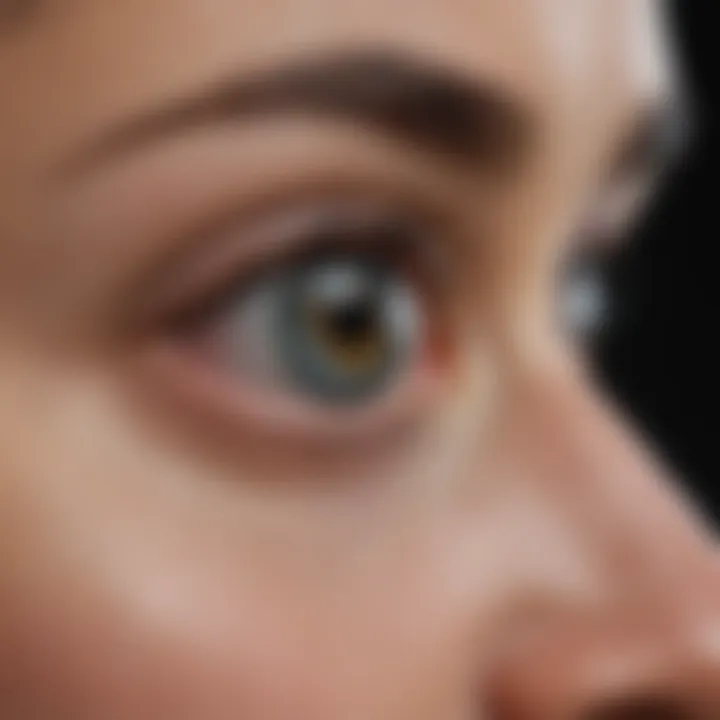
The utilization of X-ray imaging in ophthalmology offers significant benefits, yet it is crucial to understand its limitations. This section analyzes two primary areas of concern: radiation exposure and contrast limitations. Both areas significantly affect how ophthalmologists assess patient care and make diagnostic decisions.
Radiation Exposure Concerns
Radiation exposure is a pivotal consideration when utilizing X-ray technology for eye assessments. While the levels of radiation used in eye X-rays are typically low, there remains a possibility of cumulative exposure impacting patient safety. Prolonged or repeated exposure could result in potential health risks, including an increased likelihood of developing cancer.
"Understanding the risks associated with radiation exposure is fundamental for healthcare professionals when considering X-ray imaging as a diagnostic tool."
Ophthalmologists must weigh the clinical benefits against the risk of radiation exposure. Many prefer to reserve X-ray imaging for specific cases where the advantages significantly outweigh the potential hazards. For example, in diagnosing traumatic injuries or detecting tumors, effective use of X-ray may be justified despite radiation risks. Additionally, alternative imaging methods, such as ultrasound or MRI, which do not expose patients to ionizing radiation, may serve as preferable options in certain situations.
Contrast Limitations
Contrast agents enhance the visibility of structures during X-ray examinations; however, they come with their own set of limitations. In ophthalmology, the effectiveness of contrast agents may vary. Some patients experience adverse reactions to these substances, resulting in side effects that can include allergic reactions or discomfort.
Moreover, contrast agents may have limitations in visualizing certain pathological conditions. For instance, while X-rays effectively show bone structures, soft tissue visualization can be insufficient, leading to misinterpretation or missed diagnoses. This issue can limit the comprehensive assessment of internal ocular structures. In some cases, alternative imaging methods may provide better contrast and clarity, making them a preferred choice for evaluating specific eye conditions.
In summary, while X-ray imaging is a valuable tool in ophthalmology, professionals must remain aware of its limitations. Key factors such as radiation exposure and the potential for challenges with contrast agents can influence diagnostic decisions. Understanding these limitations ensures that ophthalmologists can provide the best possible care while minimizing any associated risks.
Comparative Imaging Techniques
The role of comparative imaging techniques in ophthalmology is crucial. Understanding these methods allows healthcare professionals to select the most appropriate technology for diagnosing eye conditions. Each imaging technique offers unique benefits and limitations that can influence the outcome of a diagnosis.
X-Rays vs Ultrasound
When considering the use of X-rays and ultrasound in ophthalmology, several factors emerge. X-rays provide high-resolution images of the bone structures surrounding the eye. They are particularly effective for detecting orbital fractures and other bony abnormalities. However, X-rays involve exposure to ionizing radiation, which can be a concern, especially for sensitive populations like children.
On the other hand, ultrasound utilizes sound waves to generate images and does not involve radiation. This makes it a safer option for certain patients. Ultrasound is typically used for examining soft tissue structures, such as the retina and the vitreous body. It can reveal details about fluid accumulation or tumors that may not be visible through X-rays.
In summary, the choice between X-rays and ultrasound often depends on what the healthcare provider is trying to observe. X-rays excel in examining bony structures, whereas ultrasound is advantageous for soft tissue evaluation.
"Selecting an imaging technique is not just about technology; it's about the specific clinical question and patient safety."
X-Rays vs MRI
The comparison of X-rays and MRI in ophthalmology highlights differences in capabilities and application. X-ray imaging offers quick results and is more widely available. X-rays are commonly used for initial assessments when fractures or certain injuries are suspected. However, they cannot provide detailed images of soft tissues such as the optic nerve or surrounding muscles.
MRI, or magnetic resonance imaging, offers a non-invasive method to examine soft tissues in great detail. It does not use ionizing radiation and is particularly effective in diagnosing conditions like optic neuritis or tumors affecting the optic nerve. However, MRI is more time-consuming and requires specialized equipment.
Additionally, some patients may be unable to undergo MRI due to metal implants or claustrophobia, a limitation not typically seen with X-rays. Thus, while X-rays provide quicker assessments, MRI offers comprehensive insights into the soft tissue structures surrounding the eye.
Ultimately, the decision on whether to use X-rays or MRI relies on the specific clinical scenario, patient considerations, and the type of information required for a diagnosis.
Future Directions of X-Ray Technology in Eye Care
The future of X-ray technology in eye care holds significant promise. As advances continue to shape the medical imaging landscape, ophthalmologists stand to benefit immensely. The potential for enhancing diagnostic accuracy and patient outcomes through improved imaging techniques is enormous.
In upcoming years, we may see breakthroughs that not only enhance the existing imaging capabilities but also offer innovative solutions to previously challenging eye conditions. Keeping up with these advances is crucial for both practitioners and patients alike, as it informs treatment choices and contributes to overall ocular health.
Advancements in Imaging Technology
Imaging technology is evolving rapidly, and X-ray systems are no exception. Developments like high-definition digital X-rays and portable imaging units are changing how ophthalmologists conduct assessments. These technologies provide clearer images and make it easier to detect and visualize minute structures in the eye.
Innovative features like 3D imaging capabilities are becoming more available in X-ray devices. This gives practitioners a more comprehensive view of eye anatomy. Researchers are exploring how to reduce exposure to radiation while maintaining image quality, which is vital for patient safety.
- Digital imaging: Offers faster processing times compared to traditional methods.
- 3D capabilities: Enhance visualization and aid in complex diagnoses.
- Real-time imaging: Allows for immediate assessment during procedures.
In sum, advancements in imaging technology position X-ray as a key tool in the future of ophthalmology, enabling better diagnosis and treatment.
Integration With AI for Analysis
The integration of artificial intelligence (AI) into X-ray analysis represents a transformational shift in eye care. AI systems can process large datasets quickly, identifying patterns and anomalies that may not be readily visible to the human eye. This capability fosters more precise diagnostics and improves treatment accuracy.
Utilizing AI can also streamline workflow in clinical settings, allowing healthcare providers to allocate more time to patient care rather than administrative tasks. Furthermore, AI algorithms can be trained on vast amounts of historical data to enhance predictive analytics, assisting practitioners in foreseeing potential complications in various ocular conditions.
Here are several benefits of AI integration in X-ray analysis:
- Enhanced diagnostic accuracy: Reduces likelihood of human error.
- Faster processing times: Increases efficiency in patient care.
- Predictive capabilities: Aids in early detection of diseases.
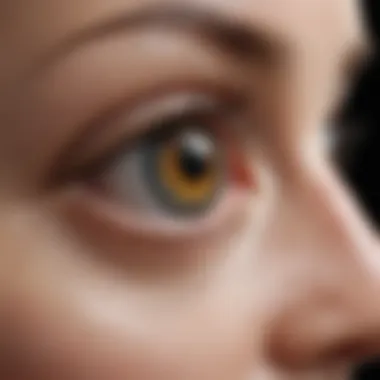
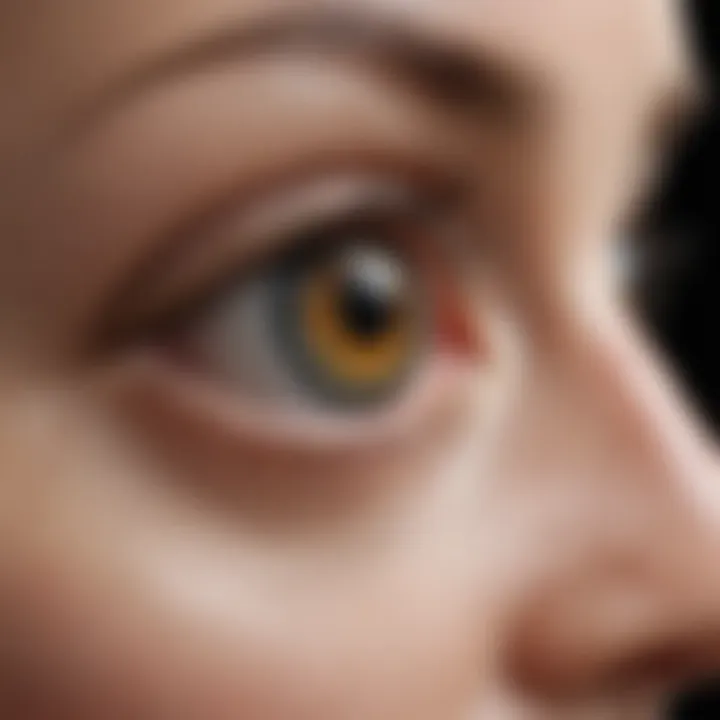
As AI technology matures, its application in ophthalmic imaging will likely become standard, contributing to improved patient outcomes and overall satisfaction with care.
In the realm of ophthalmology, future directions of X-ray technology showcase the potential for enhanced imaging, improved safety, and integration with advanced analytical tools like AI. This combination may redefine diagnostic practices and treatment pathways.
Patient Considerations and Safety
In any medical procedure, patient considerations and safety are paramount. The use of X-rays in ophthalmology is no exception. Balancing the diagnostic benefits of X-rays with potential risks is crucial for both healthcare professionals and patients. This section highlights key elements to ensure patient safety and enhance the effectiveness of the diagnostic process.
Pre-Procedure Guidelines
Before an X-ray examination, it is essential to prepare the patient properly. Detailed pre-procedure guidelines help minimize risks and enhance the overall experience. Here are important points healthcare providers should communicate to patients:
- Health History: Patients should inform their doctor of any previous eye conditions, surgeries, or current medications. This information can affect imaging outcomes and safety considerations.
- Pregnancy Status: Women should disclose if they are pregnant or suspect they might be. Gaining this knowledge is vital to avoid unnecessary radiation exposure to the developing fetus.
- Clothing Adjustments: Patients may be asked to wear a hospital gown to eliminate any interference caused by metal objects, such as zippers or buttons, which could obstruct the imaging process.
- Eye Drops and Medications: It is important to discuss any eye drops currently in use, as some may influence the results of the X-ray. Patients should follow any specific instructions regarding the cessation or continuation of medications prior to the imaging appointment.
Following these guidelines helps set the stage for a safe and accurate procedure. Proper communication between healthcare providers and patients ensures that everyone understands the process and its objectives.
Post-Procedure Care
After the X-ray procedure, patients should receive clear instructions regarding post-procedure care. This guidance helps to manage any immediate concerns and optimizes recovery. Key post-procedure considerations include:
- Observation for Symptoms: Patients should be advised to monitor for any unusual symptoms, such as vision changes or discomfort. If these occur, it is advised to consult their healthcare provider promptly.
- Hydration: Encourage patients to stay hydrated and drink plenty of fluids. This is especially important if they have had any contrast dye administered during imaging.
- Follow-Up Appointments: Schedule follow-up visits as necessary. Understanding results and discussing further steps with the healthcare provider helps in addressing any potential concerns effectively.
- Activity Restrictions: Patients should be made aware of any restrictions on their daily activities, especially regarding eye strain or light exposure.
Effective patient care does not end with the procedure; it extends to ensuring that patients understand their role in the recovery process.
In summary, thorough patient considerations before and after X-ray procedures can greatly enhance safety and diagnostic effectiveness. It fosters a collaborative environment where patients feel informed and involved in their eye health.
Case Studies and Illustrations
In the realm of ophthalmology, case studies and illustrations serve as powerful tools for understanding the practical application of X-ray technology. They provide tangible examples of how X-rays can aid in diagnosing and treating eye conditions. This segment of the article highlights the significance of these real-world scenarios in reinforcing the theoretical knowledge about X-ray utilization in eye care.
The importance of case studies is multifaceted:
- Demonstration of Efficacy: They illustrate the effectiveness of X-ray imaging in actual clinical situations, emphasizing the role it plays in successful diagnoses.
- Learning Opportunities: Case studies offer a chance for medical students and professionals to learn from real cases, enhancing their understanding of complex conditions.
- Error Reduction: By analyzing past cases, practitioners can avoid mistakes, leading to better patient outcomes.
- Research and Development: These cases often pave the way for advancements in X-ray technology, demonstrating areas that require further exploration.
Illustrations accompanying these case studies can also be critical in visualizing findings. They enhance comprehension and provide clarity on how specific conditions present on X-ray images.
"Effective education in medicine is bolstered by real-world examples that enhance theoretical learning."
Successful Diagnoses via X-Ray
Successful diagnoses via X-ray imaging showcase the capabilities of this technology in revealing abnormalities that might not be visible through other examination methods. For instance, cases of orbital fractures often present with subtle signs that require skilled analysis of X-ray results. The imaging can delineate the extent of these fractures, guiding the clinician in deciding whether surgical intervention is necessary.
In another case, X-ray imaging has proven instrumental in identifying tumors in the eye region. Clinicians can detect and evaluate the size and precise location of a tumor, informing treatment options ranging from monitoring to surgery. Documented cases highlighted the effectiveness of X-rays in quick diagnosis, which is crucial in oncological situations.
Key Points:
- X-ray technology aids in diagnosing conditions that other methods may overlook.
- Imaging provides critical information for treatment planning.
- Direct correlation between the quality of the X-ray and the effectiveness of the diagnosis.
X-Ray Imaging in Complex Cases
Complex cases often challenge the limits of traditional diagnostic methods, making X-ray imaging a vital resource. Several documented examples illustrate this.
Consider a case involving a patient with suspected retinal diseases. In such scenarios, the interaction of various ocular structures can complicate diagnosis. X-rays provide clarity, showing the relationships and conditions of adjacent structures, enabling a comprehensive overview that can lead to effective treatment.
Additionally, in cases where patients have undergone previous surgeries, the anatomical changes may obscure the visibility of certain issues. Here, the ability of X-rays to provide a clear picture of the underlying structures becomes invaluable.
Considerations:
- Interpretation relies heavily on the technician's expertise and experience.
- Patients with unique anatomical or pathological features may require specialized imaging protocols.
As X-ray technology continues to evolve, these case studies underscore its integral role in expanding our understanding and improving diagnostic accuracy in ophthalmology.
End
The conclusion of this article emphasizes the significant role X-rays play in the field of ophthalmology. With the ability to provide detailed images of ocular structures, X-rays enhance the diagnostic capabilities of healthcare professionals. Their application in diagnosing numerous eye conditions like orbital fractures and tumors highlights their importance. As X-rays are non-invasive, they minimize risk to patients while yielding critical information that ultimately aids in making informed treatment decisions.
Summary of Key Points
- X-ray technology offers high-resolution images of the eye, which is crucial for accurate diagnosis.
- Non-invasive nature of X-ray procedures ensures patient comfort and safety.
- Limitations exist, such as radiation exposure, which must be managed carefully.
- Future advancements in X-ray technology will likely integrate more with AI, enhancing diagnostic accuracy.
- Understanding various imaging techniques helps practitioners choose the appropriate method for eye examination.
Understanding these points aids healthcare professionals in appreciating the full utility of X-rays in eye care. X-rays are not without limitations; however, by recognizing their strengths and challenges, practitioners can better utilize this technology to improve patient outcomes.
Final Thoughts on the Role of X-Rays in Ophthalmology
As we look at the future, the role of X-rays in ophthalmology will continue to evolve. Integration of advanced imaging technology coupled with artificial intelligence will likely enhance both diagnostic and analytical processes. This development can lead to improved patient management strategies as eye care becomes increasingly personalized.



